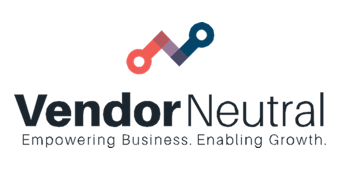Outsourcing Your Outbound Sales Engine
Why should you consider partnering with an outsourced outbound sales development agency when you could build and scale internally?
For over twelve years, I’ve booked qualified sales meetings and acted as a professional door opener. The past three years, I’ve worked as part of multiple outbound sales development agencies, and now I’m the CEO of my own agency. Having experience in all these roles, I can confidently say there are pros and cons to building and scaling internally and partnering with a full-stack outbound sales development agency.
When to Partner with an Outbound Sales Development Agency
Maybe you’re a co-founder, CEO, or sales and revenue leader of a company exiting stealth mode. Perhaps you have acquired a few clients and are ready to ramp up your outbound efforts. If that’s the case, there will be a lot of time spent on technology identification and research. You’ll need to craft messaging for multiple channels to get in front of prospects.
In addition to all this, you still have all your duties and responsibilities of running the business. That requires a lot of bandwidth as well. If you plan to seek a round of funding, then you might be required to spend hours meeting with investors and pitching to them. There simply will not be enough hours in the day for you to try to build or to scale an effective, efficient outbound sales engine.
In these instances, it makes sense to hire a third party. Going internal would require hiring a sales development rep, and you’d would have to train and coach him or her. Then you’d have to wait for that person to fully ramp up and become an expert on your product or service. (Don’t forget the costs associated with hiring an employee as well.)
When to Tackle Outbound Sales Internally
If you are a well-funded organization, you likely have a chief revenue officer (CRO), a head of sales, or a vice-president of sales to lead your revenue acceleration plan. This person will be tasked with building, assembling, and scaling the outbound sales engine. This individual will likely implement a playbook to attain the company’s revenue metrics.
However, in my experience, the more your organization grows, the less time the sales and revenue leader has to spend on optimizing the outbound sales engine. That often leads to hiring a sales development representative (SDR) manager who reports to that revenue leader. Because there are so many internal meetings to coordinate between these positions, there often isn’t enough focus on the outbound sales initiatives themselves. If you’re attempting your outbound sales internally, be cognizant of this problem, and make sure to keep meetings actionable, and never lose sight of the collective organizational goals.
"In my experience, for any outbound sales campaign to be effective, it comes down to the quality of your data."
7 Tips for Successful Outbound Sales Development
1. Don’t Lose Sight of Your Bottom Line
A lot of components contribute to assembling an outbound sales engine. There are several moving parts to consider and to evaluate, and the tools and platforms you decide to invest in should, ultimately, fit the objectives you laid out for attaining your revenue goals. If you are bootstrapping or you plan to receive funding, it’s imperative to determine if the technology stack you plan to invest in fits within your budgetary constraints.
2. Involve Your Stakeholders in the Conversation
Receive input from the end users on your teams so you can enjoy complete adoption once implemented. Failing to include your affected stakeholders in the plan leads to dissatisfaction, confusion, and miscommunications, all of which lead to poor adoption and wasted resources. (Learn more about stakeholders, procurement, and approval here.)
3. Data Is Key
In my experience, for any outbound sales campaign to be effective, it comes down to the quality of your data. When evaluating what type of data to consider for your outbound sales engine, remember that any existing prospect data older than three months is most likely not valid anymore because there have been so many transitions and job changes within the last six months. Johnny Smith, CRO of ABC Company, john.smith@abccompany.com, 555-555-1234, ext. 1234, is not likely accurate because Johnny was let go, the company closed, or it was acquired.
When considering investing in a data vendor, know there have been significant advancements in this space throughout the last couple of years. Some vendors offer intent data signals on prospects, which is a valuable resource to have as part of your tech stack. If you know a prospect is searching for your product or service, then you can warm up your outreach to increase the probability of booking a qualified sales meeting.
Ask yourself whether the data vendor provides validated data records or whether they’re just sending you a list they collated and then you have to reach out. Determine whether they provide human-verified contact records, and then document the path to your prospect. Will this increase or decrease the time it takes to connect with a prospect?
Determine whether you require information at the company level, such as financial information, or whether you need current technology information. Will this be included, or will you be expected to purchase additional licenses?
"If performed correctly, calling is still a part of the sales cycle. True, there isn’t as much cold calling as there once was, and that’s largely because of advancements in data vendors, sales engagement platforms, social selling, and video. With these tools, prospects often have an idea of who you are when you call them."
4. Invest in a Sales Engagement Platform
After your data is locked down and laser focused, invest in a sales engagement platform.
Like data vendors, this space has exploded in the last couple of years. Not long ago, it contained a couple of dominant players; now there are multiple vendors that offer just about anything you are looking for.
If your team is comprised of a few SDRs running a couple of campaigns, then you will require multiple licenses. This can become a bit expensive, especially if you are bootstrapping. If you are a larger organization ramping up and hiring an entire team and you’re targeting multiple campaigns, then invest in a different solution—perhaps one that can support multiple users and campaigns without having to invest in additional licenses.
Ask yourself whether your sales engagement platform will include a dialer. (Despite what the gurus say, calling is still alive and well! Read about how to effectively utilize calling in your sales cycle today.) Determine if your sales engagement platform also allows you to run a multi-channel cadence or whether you’ll have to navigate multiple windows and tabs each day.
Also think through questions like whether you’re going to invest in an additional conversational intelligence platform.
5. Monitor Your Coaching
When it comes to coaching, determine how you will monitor the performance of the team. Always know your goals going in. That way, you can assess your data and performance against your objectives, and you’ll know if you’re headed in the right direction.
6. Don’t Give Up on Calling Just Yet
If performed correctly, calling is still a part of the sales cycle. True, there isn’t as much cold calling as there once was, and that’s largely because of advancements in data vendors, sales engagement platforms, social selling, and video. With these tools, prospects often have an idea of who you are when you call them.
What is the best way to go about calling prospects? I’m a fan of power dialling—not Parnell dialling—because using a power dialler increases the quality of meeting you book rather than just increasing the number of conversations you have within an hour.
Will more conversations lead to more booked meetings? Absolutely. However, are they qualified sales meetings with people who meet your criteria for an ideal prospect? When combining all sales channels with the phone, it’s no longer necessarily to make five hundred calls a day because what you’re booking is more likely to convert.
7. Social Selling Is on the Rise
Social selling is a powerful channel today, and many sales reps would much rather use this than pick up the phone and have a conversation. Remember, though, it’s all in how you leverage each channel. Some prospects will respond better to
- a phone call,
- an email,
- an SMS message,
- a social touch, or
- a video message.
To Outsource or to Handle Internally: Closing Thoughts on Outbound Sales
As a co-founder, CEO, or sales and revenue leader, are you able to build and to scale an outbound sales engine internally? Absolutely. Here’s the important question, though. Can you dedicate the necessary time, energy, bandwidth, and financial resources required to do so?
When building an outbound sales engine, it requires dedication and consistency, along with the right people. If you don’t have those, you’ll never be able to navigate the modern tech stack of data, sales engagement, power or Parnell dialling, conversational intelligence, social platforms, and video. (This didn’t even touch on one channel making a comeback: direct mail.)
Your SDRs also need to be able to conduct conversations that address the challenges your prospects are currently facing, and they need to be able to articulate how your product or service can help solve those problems. When it comes to coaching and training, think about how you will ensure they are able to become industry experts.
Gone are the days of purchasing as many data credits as possible, and then using existing CRM data to load into a sales engagement platform. You can no longer “set it and forget it” just to see how many leads you can fill your calendar with, hoping one out of ten or twenty is a good fit that converts.
Rather, you need to start leveraging your tech stack to prioritize which prospects you contact and follow-up with in order to book qualified sales meetings.
If you’re prepared to implement that strategy, handling the process in house is feasible; if you lack the desire, resources, or capabilities, consider opting for third-party assistance.

Martin MacArthur, CEO, The Outbound Sales Guy.
The Outbound Sales Guy is an outbound sales agency helping co-founders and small businesses build and scale an effective outbound sales process to generate qualified sales opportunities each month.


